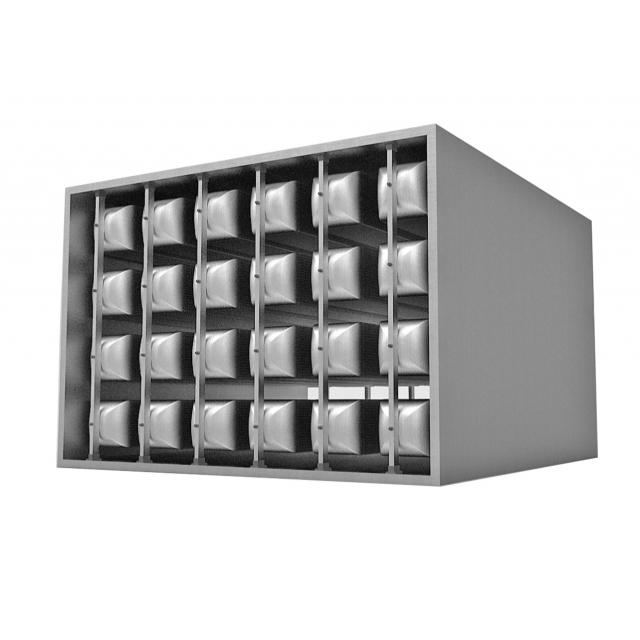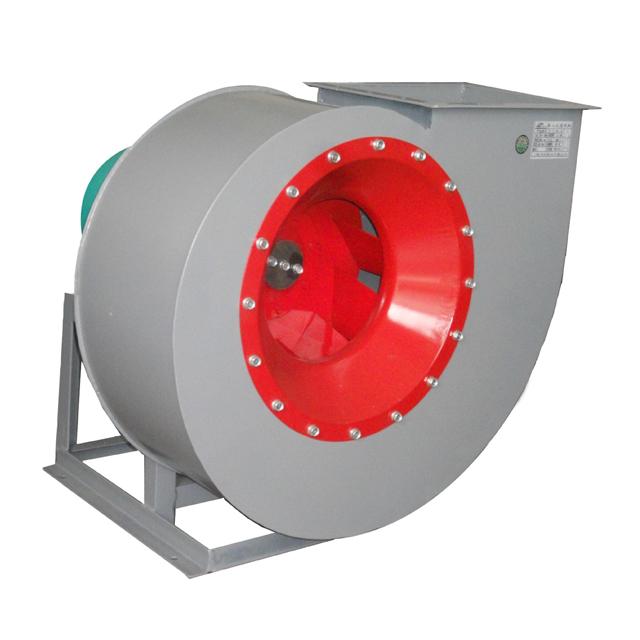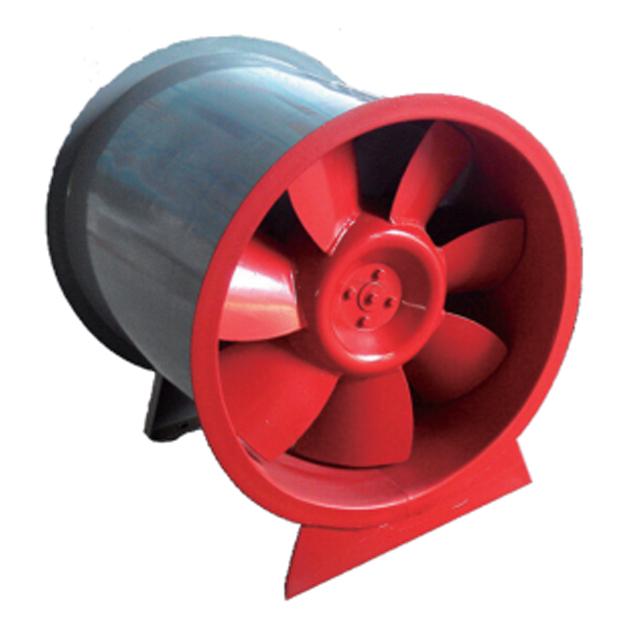Installation technology and maintenance of fans
___________________

一、Preparation before the fan installation
1、The concept of ventilation engineering
When determining the fan model and specification, the actual requirements, site conditions and budget restrictions of the ventilation project should be comprehensively considered. First of all, according to the project scale, air volume requirements and wind pressure requirements, the preliminary selection of the requirements of the fan model. For example, in large commercial complex projects, due to the large space and dense personnel, fans with high air volume and high wind pressure are usually selected to ensure the air circulation effect. Secondly, combined with the results of field investigation, considering the fan installation location, pipeline layout and noise control and other factors, further determine the specific specifications of the fan. For example, in noise-sensitive areas, a low-noise type fan should be selected to reduce the impact on the surrounding environment. In addition, the economic indicators such as the energy efficiency ratio and maintenance cost of the fan should be considered to ensure the cost control while meeting the performance requirements.
In the process of determining the fan model and specification, we can learn from the successful cases and advanced experience in the industry. For example, in the transformation of ventilation engineering, a large hospital adopts a high-efficiency and energy-saving fan, which not only meets the high requirements of the hospital for air quality and noise control, but also reduces the operation cost and improves the overall benefit. At the same time, you can also refer to the fan selection guide and performance parameter table issued by professional institutions, so as to more accurately select the suitable fan models and specifications.
When determining the model and specifications of the fan, pay attention to avoid some common misunderstandings. For example, some projects may pursue too much low cost and the selection of poor performance of the fan, resulting in the later operation effect is not ideal, and even need frequent maintenance and replacement. Therefore, in determining the model and specification of the fan, various factors such as performance, price and maintenance cost should be comprehensively considered in order to achieve long-term and stable operation effect.
Establishing fan models and specifications is a crucial part of ventilation engineering. Through the comprehensive consideration of the engineering requirements, site conditions, economic indicators and other factors, the fan models and specifications that meet both the performance requirements and the budget restrictions can be selected. At the same time, learning from successful cases and advanced experience, to avoid common mistakes, is also the key to ensure the quality and efficiency of ventilation engineering.
2、Exploration and planning of the construction site
In the preparation work before the installation of the fan, the construction site investigation and planning is a crucial part. First, we need to carry out a detailed survey of the construction site, including measuring the site size, understanding the topography, assessing the surrounding environment and other factors. Through accurate measurement and evaluation, we can ensure the smooth installation of the fan, and avoid potential safety risks.
In the planning stage, we need to develop a detailed construction plan according to the exploration results and the fan installation requirements. This includes determining the installation location of the fan, planning the lifting path, and arranging the construction personnel and equipment. Through reasonable planning, we can improve the construction efficiency and reduce unnecessary waste. At the same time, we also need to consider the risk control in the construction process, formulate the corresponding emergency plan, to ensure the safety in the construction process.
Through scientific planning and careful preparation, we can lay a solid foundation for the smooth installation of the fan.
In addition, in the construction site investigation and planning process, we also need to fully consider the requirements of environmental protection and energy saving. For example, when selecting the installation position of the fan, we should try to avoid causing noise and pollution to the surrounding environment; when planning the lifting path, we should try to choose the shortest and safest route to reduce energy consumption and emission. By taking these factors into account, we can not only ensure the smooth installation of the fan, but also contribute to environmental protection and sustainable development.
3、Preparation for fan installation materials
In the preparation of fan installation, the preparation of fan installation materials is a crucial link. First of all, we need to accurately calculate the type and quantity of the required materials according to the model and specification of the fan. For example, for a large centrifugal fan, we may need to prepare high-strength bolts, nuts, spacers and other fasteners to ensure the firm and reliable connection between the components of the fan. In addition, special lifting equipment and tools should be prepared, such as sling, pulley, hand pull gourd, etc., so as to operate safely and efficiently in the process of fan lifting.
In the process of material preparation, we should also pay attention to the quality selection of materials. High-quality installation materials can not only improve the stability and reliability of the fan installation, but also prolong the service life of the fan. Therefore, we should select the material suppliers with good reputation and reputation, and carry out strict quality inspection of the purchased materials. At the same time, we should also reasonably arrange the transportation and storage of materials according to the actual situation of the construction site, to ensure that the materials can be kept in good condition when arriving at the site.
In addition, the preparation of the fan installation materials should also fully consider the construction safety and environmental protection requirements. In the selection of materials, we should give priority to choose the materials that meet the environmental protection standards to reduce the pollution to the environment. At the same time, in the process of material transportation and storage, we should also take corresponding safety measures to prevent material damage or loss. By carefully preparing the fan installation materials, we can lay a solid foundation for the smooth installation and stable operation of the fan.
___________________

二、Installation steps and skills of the fan
1、Foundation fabrication and installation
In the ventilation engineering, the basic production and installation of the fan is the key link to ensure the stable operation of the fan and extend the service life. First, the foundation production should be carried out in strict accordance with the design requirements to ensure that the size, position and strength of the foundation meet the requirements of fan installation. For example, in the ventilation project of a large commercial building, we adopt the reinforced concrete structure as the fan foundation, through accurate calculation and reasonable design, to ensure the bearing capacity and stability of the foundation.
During the installation process, we have adopted the advanced lifting technology and accurate measuring tools to ensure that the fan can be accurately and smoothly installed on the basis. At the same time, we also strictly monitored and adjusted the parameters in the installation process, such as levelness, verticality, etc., to ensure that the quality of the fan installation reaches the best state. In addition, we also pay attention to the details of the installation process, such as bolt fastening, gasket installation, etc., to ensure the tightness and reliability of the fan installation.
Through strict basic production and installation, we can effectively avoid the fan vibration, noise and other problems in the operation process, and improve the operating efficiency and stability of the fan. At the same time, it also helps to reduce the maintenance cost of the fan and extend its service life. Therefore, in the ventilation engineering, we should attach great importance to the basic production and installation of the fan, to ensure that the fan can operate safely and stably.
2、Fan hoisting and positioning
In ventilation engineering, fan lifting and positioning is the key link to ensure the quality of fan installation. During hoisting, the appropriate hoisting equipment and hoisting method shall be selected according to the fan model and weight. For example, for large centrifugal fans, the multi-point lifting method is often used, to ensure that the fan is evenly stressed during the lifting process, to avoid deformation or damage. During positioning, the construction drawings and the actual situation on site should be carried out to ensure that the installation position of the fan is accurate and the level meets the requirements. At the same time, it is necessary to consider the inlet and exit of the fan and the pipeline to ensure that the connection is tight and no leakage.
In practical engineering, the hoisting and positioning of fans are often affected by various factors such as the site environment and equipment conditions. Therefore, before lifting, it is necessary to fully investigate and plan the construction site, and formulate a detailed lifting scheme and safety measures. During the lifting process, the lifting speed and height should be strictly controlled to ensure that the fan is lifted in place smoothly and safely. When positioning, professional measurement tools should be used for accurate measurement to ensure the accurate installation position of the fan.
In order to improve the accuracy of fan hoisting and positioning, some advanced hoisting technologies and positioning methods have been widely used in ventilation engineering. For example, the use of 3 D modeling technology for fan lifting simulation can predict the force and deformation in the lifting process, and provide strong support for the formulation of the lifting scheme. At the same time, the laser positioning technology can realize the accurate measurement and positioning of the installation position of the fan, and improve the installation accuracy and efficiency.
4、Connect the pipe with the accessories
In the process of fan installation, connecting the pipe and accessories is a crucial link. First of all, the selection of the pipeline should be based on the actual requirements of ventilation engineering, such as air volume, wind pressure and other parameters, to ensure that the pipeline material, specifications and length can meet the design requirements. For example, in large industrial ventilation systems, galvanized iron skins or stainless steel pipes are often used to ensure their corrosion resistance and long life. At the same time, the choice of accessories can not be ignored, such as elbow, three links, flange, etc., its quality and installation accuracy directly affect the performance of the whole ventilation system.
During installation, the sealing of connecting pipes and accessories is the key. According to engineering experience, the use of sealant or gasket can effectively prevent the occurrence of air leakage. Furthermore, pipe connections shall be flat and flange connections shall be fastened and reliable to ensure the stable operation of the entire ventilation system. At the same time, the setting of the pipeline support should also be reasonable, not only to ensure the stability of the pipeline, but also to avoid causing excessive pressure on the pipeline.
When connecting the pipes and the accessories, we must strictly follow the operating procedures to ensure that every detail is in place. At the same time, regular maintenance and inspection of the ventilation system is also essential to timely detect and deal with potential safety hazards.
___________________

三、Quality control during the fan installation process
1、Installation accuracy control
In the ventilation engineering, the fan installation accuracy control is the key link to ensure the efficient and stable operation of the whole system. During the installation process, the operation must be carried out in strict accordance with the design requirements and technical specifications to ensure the accuracy and stability of the fan installation position.
Installation accuracy control is not only related to the performance of the fan itself, but also directly affects the operation effect of the whole ventilation system. If the installation accuracy is insufficient, it may lead to unstable operation of the fan, excessive noise, increased energy consumption and other problems, and may even cause safety accidents. Therefore, in the installation process, we must pay attention to every detail, from the basic production, lifting positioning to the connection of pipes and accessories, should be operated in strict accordance with the specifications, to ensure that the installation accuracy meets the design requirements.
In order to improve the installation accuracy control level, we can also learn from some advanced installation technology and experience. For example, using 3 D modeling and simulation technology, you can accurately simulate and predict the installation position of the fan before installation, so as to find and solve potential problems in advance. In addition, intelligent installation equipment and technology can also be introduced, such as laser stadiometer, automatic positioning system, etc., to improve the installation accuracy and efficiency.
2、Seal performance inspection and adjustment
During the installation process of the fan, the sealing inspection and adjustment are the key links to ensure the normal operation of the ventilation system. Poor sealing can lead to air leakage, affect the ventilation effect, and may even cause safety accidents. Therefore, after the installation is completed, the sealing ability of the fan and its connecting pipe must be strictly checked.
The airtightness inspection usually adopts the pressure test method, that is, in the running state of the fan, by injecting the system with a certain pressure of gas, to observe the pressure change to judge the sealing performance. According to the industry standards, the pressure value of the pressure test should reach 1.5 times of the system working pressure, and keep it for a certain time to observe the pressure drop. If the pressure drops beyond the specified range, it indicates that there is a leakage problem, and it should be adjusted accordingly.
In the adjustment process, the first is to determine the specific location of the leak. This can be done by observing pressure changes, listening to sound, applying soapy water, etc. Once the leakage point is found, corresponding measures should be taken to repair it according to the specific situation. For example, the leakage at the pipe connection can be solved by fastening the bolts, replacing the gasket; for the leakage of the fan itself, replacing the seal or adjusting the fan structure may be required.
In addition to directly repairing the leakage point, the sealing performance can also be improved by optimizing the system structure and improving the installation accuracy. For example, using the flexible connector at the pipe connection can reduce the leakage caused by vibration; and the installation accuracy is strictly controlled during the fan installation to ensure that the connection between the fan and the foundation and pipe is tight and seamless.
In addition, the following points should be paid attention to in the sealing inspection and adjustment:
① Regular inspection and maintenance, to ensure the continuous and stable sealing performance;
② Strictly follow the operating procedures to avoid the damage or safety accidents caused by improper operation;
③ Records should be made for subsequent analysis and improvement.
3、Electrical connection and commissioning
During the fan installation process, the electrical connection and debugging are the key links to ensure the normal operation of the fan. First, electrical connections must be carried out in strict accordance with relevant standards and specifications to ensure a firm connection and good contact. Suitable cables and terminals should be used to avoid broken or aged cables to reduce the risk of electrical failure. At the same time, for large fans, the carrying capacity and length of the cable should also be considered to ensure the safety and reliability of the cable.
During the commissioning stage, a comprehensive electrical performance test of the fan is required. This includes the measurement and recording of voltage, current, power and other parameters to verify that the fan meets the design requirements. In addition, the control system of the fan should be adjusted to ensure that the control logic is correct and the response is quick. In the debugging process, if any abnormal situation is found, it should be investigated and handled in time to avoid affecting the normal operation of the fan.
In order to improve the efficiency and accuracy of electrical connection and commissioning, advanced test equipment and automated commissioning system can be introduced. For example, the use of high-precision electrical measuring instrument can accurately measure various parameters, while the automatic debugging system can automatically complete the debugging process according to the preset procedures, reducing the interference of human factors. At the same time, we can also learn from the successful experience and technical means of other industries, and constantly optimize the process and methods of electrical connection and debugging.
In the process of electrical connection and debugging, attention should also be paid to safety management and risk control. Perfect safety management system and operating procedures should be established to ensure the safety of operators. At the same time, the necessary safety facilities should also be set up, such as leakage protector, overload protector, etc., to deal with the possible electrical faults. In addition, emergency plans should also be formulated to deal with emergencies and ensure the safety and control of the fan installation process.
___________________

四、Maintenance and maintenance of the fan after installation
1、Maintenance cycle and planning
In the maintenance work of the fan after installation, the maintenance cycle and plan formulation is crucial. Generally speaking, the maintenance cycle of the fan should be determined according to its use frequency, the working environment and the performance characteristics of the equipment itself. For example, for fans with high frequency use and harsh working environment, and for fans with low frequency use and good working environment, the maintenance period can be appropriately extended to once a year.
The various components of the fan and the maintenance requirements of the system should be fully considered when developing the maintenance plan. For example, for fan bearings and gear boxes, lubricating oil should be replaced regularly and their wear checked, fan blades and enclosure should be regularly cleaned and checked for their integrity, and the working condition of cable connections and electrical components should be checked regularly. In addition, the maintenance plan should be dynamically adjusted according to the actual operation condition of the fan.
In addition, some industry standards and specifications can be referred to in the maintenance plan. These standards and specifications usually contain detailed requirements and operating guidelines for fan maintenance, which can provide strong support for maintenance work. At the same time, it can also combine the actual situation of the enterprise, and make the maintenance plan in line with their own needs.
2、Common troubleshooting and handling
In the maintenance and maintenance process of the fan after installation, common troubleshooting and handling is the key link to ensure the stable operation of the fan. Common fan faults include excessive vibration, abnormal noise, bearing overheating, etc. In view of these faults, we need to take a series of measures to investigate and deal with them.
Take excessive vibration as an example, according to statistics, about 30% of the fan faults are related to vibration problems. Excessive vibration may be caused by unbalanced fan installation, loose foundation or damaged bearing. During the investigation, we can use the vibration monitoring instrument to monitor the fan in real time, and determine the vibration source through data analysis. Once the cause of the fault is determined, it is necessary to take corresponding treatment measures, such as readjust the installation position of the fan, strengthening the foundation or replacing the bearing.
Noise abnormality is also one of the common faults of the fan. Too much noise not only affects the working environment, but also may cause interference to the normal operation of the fan. When checking for noise anomalies, we can use the sound frequency spectrum analysis technology to analyze the frequency spectrum of the sound produced by the fan, so as to determine the source of the noise. For different types of noise, we can take different treatment measures, such as replacing the noise reduction materials, adjusting the fan speed or optimizing the structure of the fan.
In addition, bearing overheating is also one of the common faults of fans. Bearing overheating may be due to poor lubrication, bearing wear, or cooling system failure. When checking the bearing overheating fault, we need to carefully check the bearing, and check the operation of the lubrication system and cooling system. Once the fault is found, it is necessary to timely replace the worn bearings, supplement or replace the lubricating oil, and repair the cooling system.
3、Maintenance records and file management
In the maintenance work of the fan after the installation, the maintenance record and file management is a crucial link. These records not only detail every step and detail of the fan maintenance, but also provide valuable data on the operating status of the fan. By regularly sorting out and analyzing these records, the potential problems in the operation of the fan can be found in time to provide strong support for preventive maintenance.
For example, the project has established a sound maintenance record and file management system after the installation of the fan. After each maintenance, the staff shall record the maintenance time, content, replaced parts and the running status of the fan after maintenance in detail. At the same time, the data analysis model can also be used to process the recorded data, and predict the wear trend of some parts of the fan by comparing the data changes of different time periods, so as to replace them in advance and avoid shutdown accidents caused due to component damage.
In addition, maintenance records and file management can also help to improve the efficiency and quality of maintenance work. By consulting the historical records, the staff can understand the past maintenance situation of the fan, to provide reference for the current maintenance work. At the same time, these records can also be used as the basis for the performance evaluation of the fan, to provide the improvement direction for the subsequent maintenance work.






